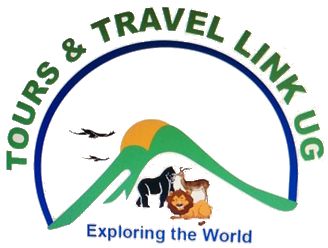In East Africa, Uganda is a country renowned for its diverse and stunning natural beauty, rich cultural heritage, and a wide range of wildlife. It’s often referred to as the “Pearl of Africa” due to its remarkable landscapes and abundant natural resources.
The pearl of Africa is famous for its diverse wildlife and is home to many national parks and reserves. The most notable is Bwindi Impenetrable National Park, a UNESCO World Heritage Site, renowned for its mountain gorilla population. Other parks like Queen Elizabeth National Park, Murchison Falls National Park, and Kidepo Valley National Park offer opportunities to see diverse wildlife including elephants, lions, giraffes, hippos, and a variety of bird species.
Uganda offers various adventure activities such as white-water rafting on the Nile River, kayaking, bungee jumping, zip-lining, and quad biking. The Nile River, one of the longest rivers in the world, provides thrilling rafting experiences for adventure seekers.
Uganda’s tourism sector is continuously growing, attracting visitors from around the world to experience its natural wonders, diverse wildlife, and rich cultural heritage. It’s a destination that offers a blend of adventure, wildlife, culture, and breathtaking scenery, making it a top choice for travelers seeking an authentic African experience.
Geography and Landscape.
Uganda is situated in the Great Lakes region of East Africa. It shares borders with Kenya to the east, Tanzania to the south, Rwanda to the southwest, South Sudan to the north, and the Democratic Republic of the Congo to the west.
The country’s geography is incredibly diverse, featuring lush savannahs, dense rainforests, rolling hills, and several large lakes, including Lake Victoria, Lake Albert, and Lake Edward. The Rwenzori Mountains, also known as the Mountains of the Moon, are a prominent feature in western Uganda.
Wildlife and Conservation.
Uganda is renowned for its abundant and diverse wildlife. The country is home to various national parks and reserves, such as Bwindi Impenetrable Forest National Park, Queen Elizabeth National Park, Murchison Falls National Park, and Kibale Forest National Park.
These protected areas are teeming with wildlife, including the “Big Five” (lion, elephant, buffalo, leopard, and rhinoceros), as well as numerous primate species like chimpanzees and gorillas. Bwindi Impenetrable Forest National Park is famous for its mountain gorilla population, attracting tourists from around the world for gorilla trekking experiences.
Adventure Tourism.
Uganda offers a wide range of adventure activities, including white-water rafting on the Nile River, mountain climbing in the Rwenzori Mountains, and trekking in the Semuliki Valley.
Visitors can also go on safaris to see wildlife, enjoy boat cruises on the Nile and other lakes, and partake in bird watching, as Uganda is home to over 1,000 bird species.
Cultural and Historical Attractions.
Uganda has a rich cultural heritage with over 56 ethnic groups, each offering a unique cultural experience. The Baganda people are the largest ethnic group, and their vibrant culture is showcased in the capital city, Kampala.
Historical sites like the Kasubi Tombs and the Uganda Martyrs’ Shrine provide insights into the country’s history and religious heritage.
Infrastructure and Tourism.
Uganda has made efforts to improve its tourism infrastructure in recent years. There are various accommodation options ranging from budget to luxury lodges and hotels.
The main international airport, Entebbe International Airport, serves as the primary gateway for international visitors.
Challenges.
While Uganda has great potential as a tourist destination, it faces challenges such as infrastructure development, wildlife conservation, and sustainable tourism practices.
Political stability and safety concerns in certain regions can impact the overall tourism experience. However the government works hand in hand with security organs to prevail internal peace.

